Pakistan’s first-ever climate change plan unveiled
National Adaptation Plan was approved by cabinet to enhance nation’s resilience against impacts of climate change

Federal Minister for Climate Change and Environmental Coordination Senator Sherry Rehman on Wednesday unveiled the country’s first-ever National Adaptation Plan (NAP) unanimously approved by the federal cabinet to enhance the nation’s resilience against adverse impacts of climate change and environmental degradation.
NAP is a framework for implementing large-scale environmental adaptation, building climate resilience, promoting inclusivity, and facilitating collaboration among different stakeholders, and serves as an effective tool for climate finance mobilisation.
The initiative marks a big step forward in Pakistan's commitment to combat the challenges posed by climate change.
“Pakistan is now on the world's radar as a flashing hotspot for climate disasters, and when your house is on fire, one has to take responsibility,” she said in a press release issued by the Ministry of Climate Change and Environmental Coordination.
She said that, after the 2022 mega-flood impacted 33 million people of Pakistan and broke all records of monsoon flooding in the world, the plan became an urgent need for the country.
Read more: Vagaries of climate change
“In the long journey towards rehabilitation and rebuilding resilience for one-third of the country, the MoCC&EC took up the challenge of completing it in an accelerated timeframe. Given the existential nature of climate change as a non-traditional security threat to Pakistan, it is imperative for all of us to prepare diligently and act proactively,” she said.
Sherry said that NAP is a framework, and a beginning of an adaptation journey, not the end of the road. “Our job is to identify who needs to implement which part of this plan, as it takes a whole-of-country approach. The document outlines for the federal ministries what they need to do and how they have to change their development planning, and every focal ministry must act to climate-proof its actions and strategies,” she added.
Similarly, she said, the provinces will form the heart of the execution of the plan, along with local bodies.
NAP process has been effectively guided by 10 essential guidelines which are integrating climate adaptation, strategic thinking, evidence-based decision-making, promoting nature-based solutions, acting locally, leaving no one behind, thinking ahead and staying flexible, addressing inequity, fostering coordination and collaboration, and building capacity and knowledge.
These guidelines have enabled Pakistan to craft a robust and inclusive adaptation strategy, ensuring resilience in the face of climate challenges and a sustainable future for the nation.
“The priorities that this plan addresses flow out of an assessment of potential impacts on multiple sectors, many of which have already withstood an existential erosion in their lifeline functions and capacities,” the press release said.
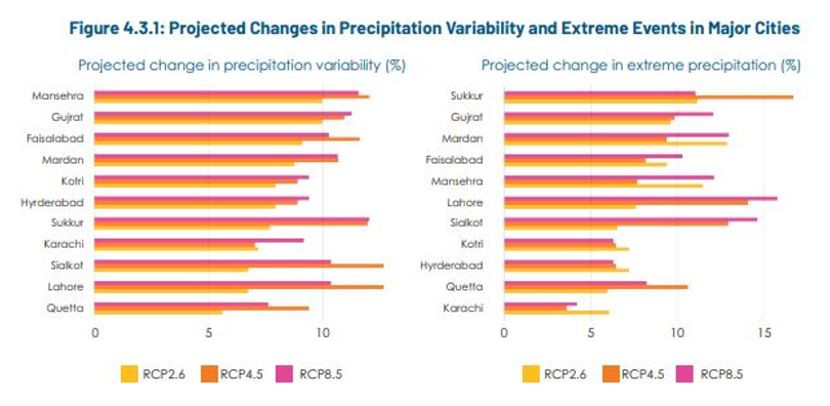
The first sectoral priority is the agriculture-water nexus, as it is critical to Pakistan's entire social, economic, and adaptive trajectory, with recurring hydromet crises and looming scarcity a real possibility.
The agriculture sector accounts for 20 per cent of the GDP and 40 per cent of the labour force and is the major source of subsistence and livelihood for the rural population.
The adaptation strategies will focus on incentivising farmers for climate-smart practices, modernising irrigation services, devising a long-term agriculture growth strategy, and managing river flow variability under climate scenarios.
Also read: The rising and falling interest in climate change
The second priority is natural capital, which contributes an estimated 13-15 per cent to Pakistan's per capita wealth, however, rising temperatures and prolonged droughts contribute to deforestation, forest degradation, and an increase in wildfires, altering ecosystems that result in biodiversity loss.
Currently, Pakistan ranks among the top ten countries in the world most impacted by the loss of biodiversity and ecosystem services. Adaptation strategies include mainstreaming sustainable land management, promoting integrated watershed management, improving water quality through better wastewater management, investing in coastal and marine resources, and addressing the air pollution-climate change nexus.
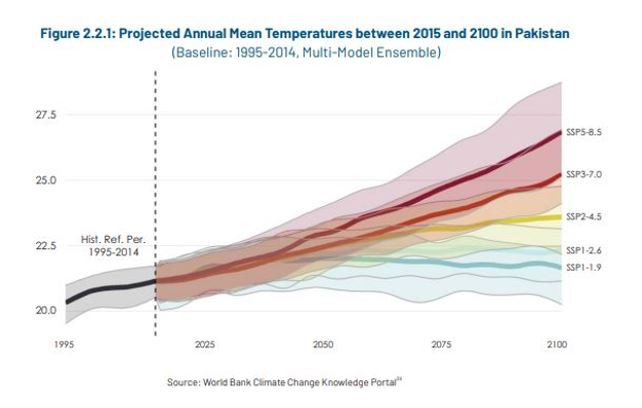
The third priority is urban resilience. Given that Pakistan is among the most urbanised countries in South Asia, with 38 per cent of its population living in urban areas. It continues to see rapid urbanisation in line with its population growth. Urbanisation is expected to further increase due to climate-induced migration. Urban areas are becoming increasingly vulnerable to climate change risks. Flood hazards are projected to increase, with primary cities (notably Lahore and Karachi) having the highest exposure to urban flooding. Adaptation strategies will focus on mainstreaming climate adaptation across all levels of government, improving land regulation, bolstering climate-smart municipal services, leveraging nature-based solutions for climate risks, and developing financing instruments for green urbanisation.
The fourth priority is Pakistan’s human capital, as population current indicators are a cause of concern, requiring urgent attention. The youth cohort of Pakistan is growing, extreme climate events impede access to basic health and education services, give rise to malnutrition and life-threatening diseases, and diminish both opportunities but also the economic productivity of labour force, leading to reduced incomes, financial instability, and further exposure to poverty and hardship.
“Any child who grew up in a disaster camp will forever be shaped by that experience,” Sherry added.
The key adaptation strategies will be mainstreaming climate adaptation in health and education policies, enhancing climate resilience through disaster emergency preparedness and response, and building workforce capacities to address and adapt to climate risks.
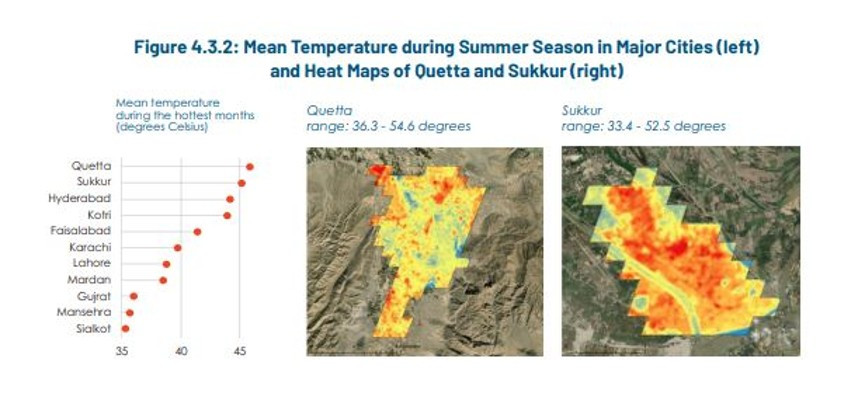 The fifth but a very significant priority is enhancing disaster risk management (DRM). Lessons learnt from the 2022 megaflood make modernising DRM crucial for the adaptation imperatives of Pakistan.
The fifth but a very significant priority is enhancing disaster risk management (DRM). Lessons learnt from the 2022 megaflood make modernising DRM crucial for the adaptation imperatives of Pakistan.
The key adaptation strategies will focus on understanding climate and disaster risk through advanced early warning systems and data-driven analysis, strengthening disaster risk governance with clear policies and coordination mechanisms, investing in risk reduction for community and infrastructure resilience, and enhancing disaster preparedness for effective response and "Build Back Better" with risk-informed approaches in recovery and reconstruction.
Read more: Pakistan and climate change
The statement said that the focus on the priorities above will not only yield significant advancements in their respective domains but also bring about cross-cutting benefits in critical areas such as gender, youth, and social inclusion.
Climate change poses disproportionate challenges for marginalised groups with limited capacity to respond and recover, especially those on the frontline of the climate crisis. As a result, investments in the prioritised sectors will significantly benefit the youth, women, and marginalised communities.
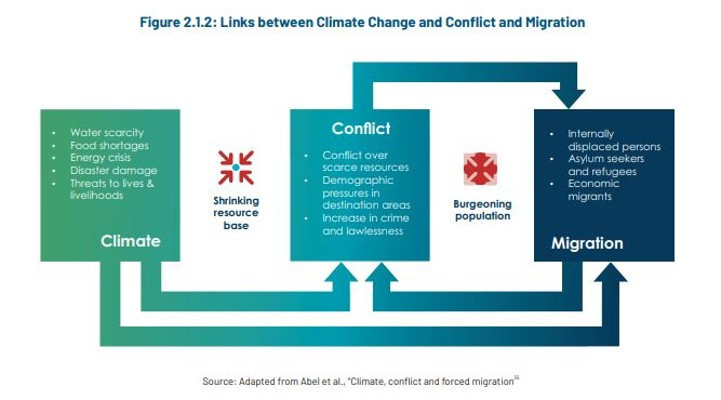
The process for developing the NAP has been entirely home-grown, country-driven and embedded in rigorous consultations at several levels, especially the related federal ministries, and the provinces, who will undertake the coordination of mainstreaming adaptation measures at the local levels.
“The assessments are built on local knowledge and lessons learned of adaptation needs at the cross-sectoral and human levels. None of these are by any means exhaustive, but instead focus on a first roadmap of actions and changes needed in our development knowledge, planning and resourcing,” Sherry said.
She said that the successful implementation of the NAP demands more than just the efforts of a single ministry; instead, it calls for a whole-of-country approach with local government at the core of adaptation.
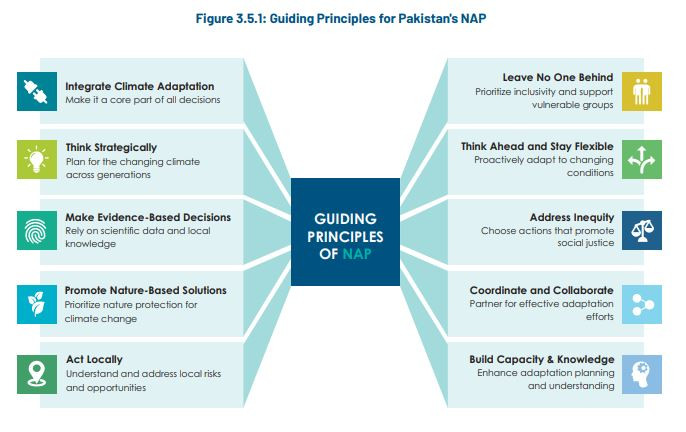
“Every ministry and provincial department (including G-B and AJK) must now actively create and update their plans, aligning with the pathway outlined in the NAP.”
She said that the ministries should also focus on climate budget tagging which involves categorising and tracking climate-related expenditures within the budgetary process and assess the effectiveness of funds devoted to climate adaptation initiatives, driving informed decision-making for a greener and climate-resilient future.

“It is essential for sectors and provinces to assess their specific needs and initiatives systematically and present bankable projects, fostering a shift in mindset that prioritises the integration of adaptation and resilience guidelines into development, social, and economic planning,” the minister emphasised.
Sherry said that the NAP is embedded in the philosophy that all human accomplishment begins with hope and prayer but needs a strategy to translate vision into reality.
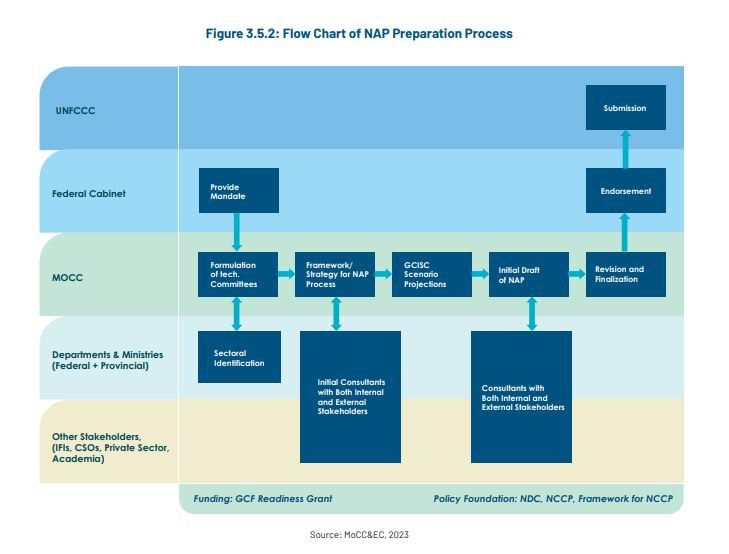
She also appreciated the work done by the dedicated core team at the MoCC&EC, and acknowledged the technical support provided by World Bank’s team in Pakistan.
“Our hope is that Pakistan seizes an opportunity to rebuild with real resilience and become a leader in creating climate adaptive futures from the burning soil of extreme climate adversity. The climate clock is ticking for all, so this is a plan to scaffold that hope,” the minister concluded.



















COMMENTS
Comments are moderated and generally will be posted if they are on-topic and not abusive.
For more information, please see our Comments FAQ